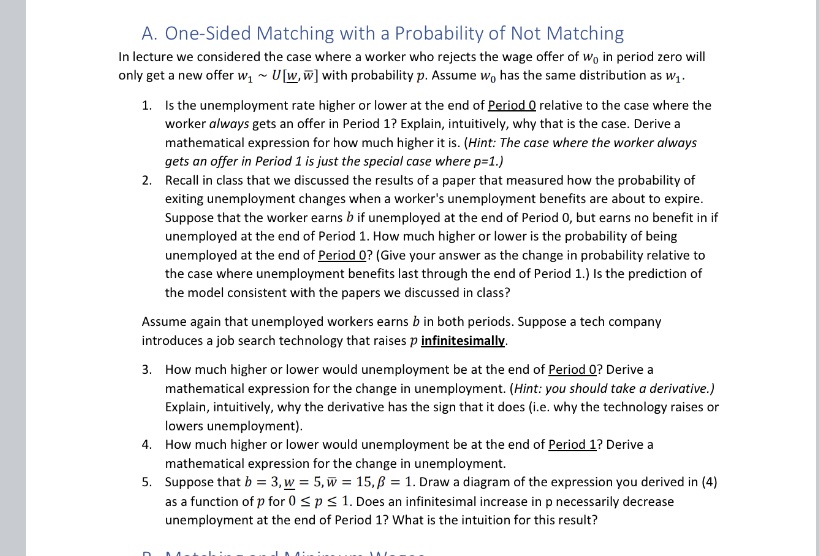Answered step by step
Verified Expert Solution
Question
1 Approved Answer
Please answer question A all parts(1-5). Please be detailed in your explanation. A. One-Sided Matching with a Probability of Not Matching In lecture we considered
Please answer question A all parts(1-5). Please be detailed in your explanation.

Step by Step Solution
There are 3 Steps involved in it
Step: 1

Get Instant Access to Expert-Tailored Solutions
See step-by-step solutions with expert insights and AI powered tools for academic success
Step: 2

Step: 3

Ace Your Homework with AI
Get the answers you need in no time with our AI-driven, step-by-step assistance
Get Started


